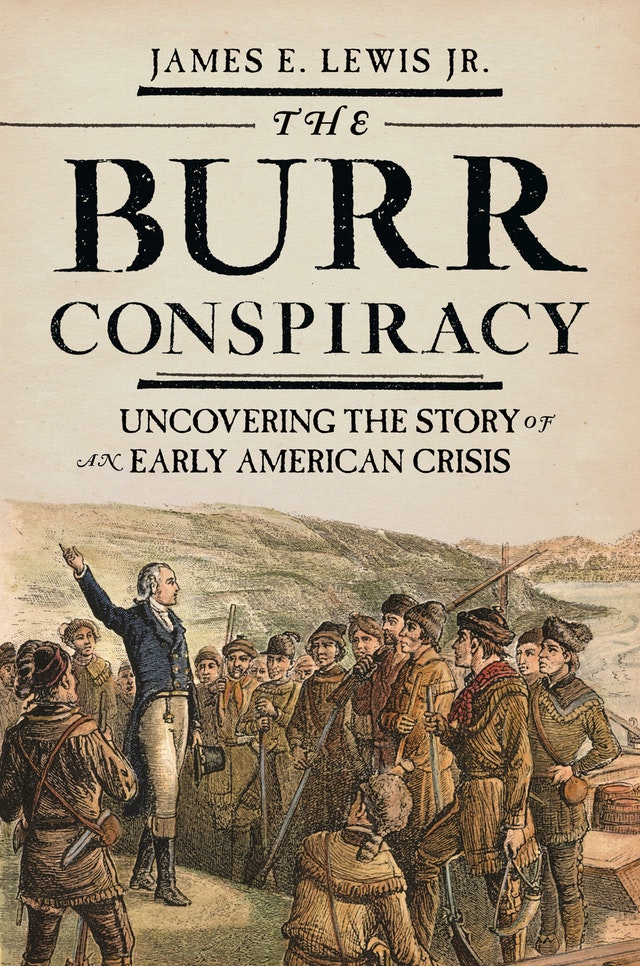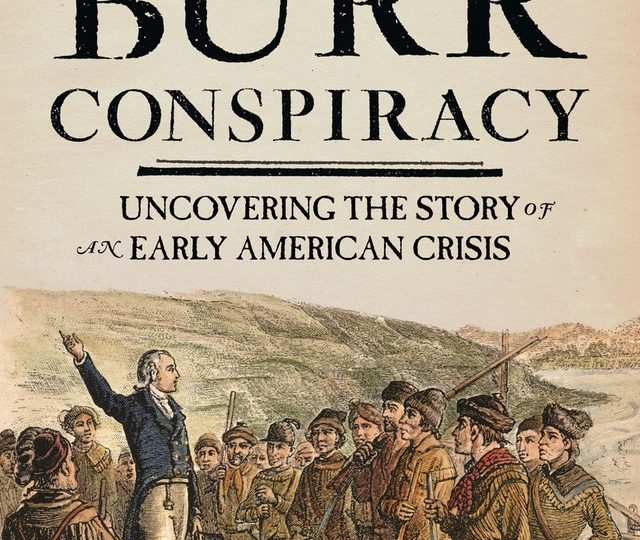Editor’s Note: The following is an excerpt of R.B. Bernstein’s review of James E. Lewis, Jr., The Burr Conspiracy: Uncovering the Story of an Early American Crisis, which will appear in Law and History Review 38.2 (May, 2020).

James E. Lewis, Jr., The Burr Conspiracy: Uncovering the Story of an Early American Crisis. Princeton: Princeton University Press, 2017. Pp. viii, 713. $35.00 hardcover (ISBN 9780691177168); $21.95 paper (ISBN 9780691191553).
This large, complex, sophisticated study examines how people in the early American republic informed themselves about politics in general and a major political, legal, and constitutional crisis in particular. The author, James E. Lewis, Jr., is professor of history at Kalamazoo College, whose earlier work (e.g. The American Union and the Problem of Neighborhood: The United States and the Collapse of the Spanish Empire, 1783-1829 (University of North Carolina Press, 1998)) explored American foreign policy in the early republic.
The Burr conspiracy has long fascinated scholars and general readers. The challenge that attracts them remains how to navigate the currents of fact and speculation swirling around Aaron Burr. After leaving the vice presidency in 1805, Burr spent two years traveling through the American Old West. Why did he do so? (I have always suspected that Burr was seeking from his meetings with Westerners any good prospect that might turn up.) As Burr traveled, smiled, and listened, Americans up to and including President Thomas Jefferson suspected him of conspiring to carry out malign designs against the United States. Declaring his guilt “clearly established,” Jefferson ordered federal authorities to arrest Burr and have him tried for treason and on other charges. The trial took place in the United States Circuit Court for Virginia, with Circuit Justice (Chief Justice) John Marshall presiding. Breaking a cardinal rule of legal practice, Burr joined the high-powered lawyers defending him. The trial ended with the jury refusing to convict Burr of treason; Marshall held that the Constitution’s narrow definition of treason meant what it said.
“Lewis wants to show us how Americans in Burr’s era informed themselves about politics, specifically about such a confusing event as the Burr case. What sources of information did they use? How did they evaluate conflicting reports, clashing witnesses, and claims by government and defense?”
Questions proliferate still. Did Burr intend to detach western states and territories from the United States, and to wage war against the United States to that end? Did he also target the Spanish colony of Mexico? Did he plan to establish a vast empire in the heart of North America with himself at its head? Many (such as Thomas Perkins Abernethy and Walter McCaleb) have sought to answer the tangled riddle of Burr’s hopes, motives, and intentions. Others (most recently, R. Kent Newmyer, The Treason Trial of Aaron Burr: Law, Politics, and the Character Wars of the New Nation (Cambridge University Press, 2012)) have tried to analyze how President Jefferson, federal prosecutors in Virginia and Kentucky, and Chief Justice Marshall clashed and contended over the case brought against Burr.
Lewis disclaims any intention of establishing what Burr was up to and what he did and did not do. In this book, he sets out to do something at least as important and valuable. Lewis wants to show us how Americans in Burr’s era informed themselves about politics, specifically about such a confusing event as the Burr case. What sources of information did they use? How did they evaluate conflicting reports, clashing witnesses, and claims by government and defense? How did they distinguish fact from rumor (including weighing informants’ social status and political affiliations)? How have their confusion and the conflicting accounts they heard or read about shaped ours? […]
Lewis tells us how the Burr story took shape in the minds of its audiences, both ordinary Americans and political, legal, and judicial office-holders. He approaches the story as if he were studying the underside of an elaborate carpet, the side creating the image on the carpet’s surface rather than the surface itself. Readers eager to learn what Burr did and why, and whether he deserved to be acquitted or convicted, might find Lewis’s approach frustrating. They should keep in mind that their expectations clash with his purposes. Burr’s guilt or innocence may be beyond resolution; his intentions are beyond discovery; but the effects of the Burr conspiracy on the difficulty of knowing are indisputable.
This book reminds me of Herman Melville’s Billy Budd, Sailor. Though he left it unfinished when he died, Melville achieved his goal of creating a novel as much about how hard it is to know the truth of the past as about exploring that past. Readers find Billy Budd, Sailor vexing because Melville wanted not to enlighten his readers but rather to make them realize how hard it is to know the past. Reading The Burr Conspiracy in this light reinforces Melville’s lesson, all the more crucial when we consider the strengths and limits of the legal process’s ability to establish truth. Reading this book in the era of the Mueller Report generates the same conclusion. Those seeking an authoritative resolution of Burr’s case will be disappointed until they realize what Lewis is trying to show: In such cases as Burr’s, an authoritative resolution will always be out of reach.
R. B.
BERNSTEIN
City College of New York


